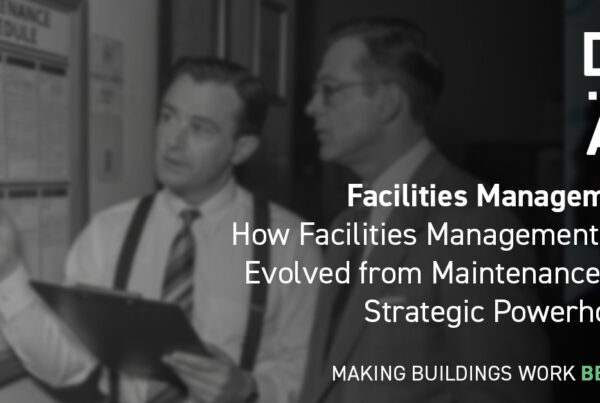
Caring for Heritage: Facilities Management Strategies for Historic Buildings
Exploring the specialised approaches required to manage historic properties, including the integration of modern FM practices to ensure these iconic structures remain functional and preserved for future generations.
Historic buildings are more than bricks and mortar, they are physical links to a shared past, embodying the craftsmanship, design, and stories of centuries gone by. They shape the character of our towns and cities, provide a strong sense of place, and play a vital role in tourism, education, and cultural identity.
In England alone, there are over 379,000 listed buildings—each recognised for its architectural and historical significance (Historic England, 2023). Yet, behind their charm lies a complex challenge: keeping them functional and safe without compromising their authenticity. This is where specialist facilities management (FM) becomes critical.
Understanding the Value, and the Vulnerability of Heritage Properties
Managing historic buildings means navigating a world of listed statuses, conservation rules, ageing materials, and often incomplete documentation. From Grade I palaces to humble Grade II cottages, these structures require tailored care.
However, the need for attention is urgent. According to Historic England’s 2024 Heritage at Risk Register, 4,891 heritage sites are at risk due to neglect, decay, or inappropriate development.
It’s not just a cultural loss. The economic stakes are high, too. The heritage sector made a £44.6 billion contribution to the UK economy in 2022, supported £15.3 billion in direct GVA in 2024, and overall contributed £44.9 billion in direct, indirect, and induced economic impact (Heritage Counts). This includes activity across construction, architecture, museums, libraries, and archives. The sector also supported over 523,000 jobs in 2024 alone.
Facilities Managers tasked with overseeing heritage assets face several hurdles, including:
- Structural vulnerabilities: Time takes a toll on timber beams, stone façades, and original plumbing or wiring.
- Limited records: Original blueprints and maintenance logs may be non-existent or incomplete.
- Preservation restrictions: Alterations may require listed building consent or coordination with conservation officers.
- Modern usage vs old design: Integrating heating, ventilation, accessibility, and IT systems sensitively.
- Sustainability: Meeting modern energy efficiency goals in buildings never designed for it.
Modern Sectors in Historic Spaces
Historic buildings in the UK host a variety of industries and sectors, often leveraging the unique charm and character of these structures. Some of the key sectors include:
Creative Industries: This includes art galleries, design studios, and media companies. Historic buildings provide an inspiring environment that fosters creativity and innovation
Hospitality and Tourism: Many historic buildings have been converted into hotels, restaurants, and cafes. These establishments attract tourists and locals alike, offering a unique experience
Retail: Boutique shops and specialty stores often find a home in historic buildings, benefiting from the distinctive ambiance that attracts customers
Education and Cultural Institutions: Universities, museums, and libraries frequently occupy historic buildings, preserving their educational and cultural significance
Professional Services: Law firms, consultancy agencies, and other professional services sometimes operate out of historic buildings, adding prestige and a unique setting for their operations
Principles for Heritage Facilities Management
Caring for historic buildings requires more than just technical skill, it calls for a deep understanding of heritage values, a respect for traditional craftsmanship, and a long-term vision for sustainable use. Facilities management teams must walk a fine line between preserving what makes a building special and ensuring it continues to function in today’s world. This balance is achieved through a series of guiding principles that shape every decision, from routine maintenance to major upgrades.
One of the most fundamental of these principles is the idea of conservation-led maintenance. This approach places the building itself at the heart of all decision-making. Rather than imposing modern solutions that might alter or disrupt the original fabric of the structure, conservation-led maintenance encourages managers to work with the building, not against it. This often means choosing to preserve and repair original features wherever possible, using traditional materials and methods. For example, a crumbling section of lime mortar would be repointed using matching lime, not replaced wholesale with modern cement. The goal is to maintain the building’s character and authenticity while extending its useful life.
Alongside this, preventive care is critical. Unlike reactive maintenance, which responds to problems after they’ve occurred, preventive facilities management seeks to anticipate and avoid issues before they escalate. In the context of a historic building, this might include regular roof inspections to identify early signs of water ingress, gutter cleaning to prevent overflow and damp, or cyclical checks on timber elements to catch signs of rot or infestation. By investing in regular inspections and planned maintenance schedules, facilities managers can reduce the risk of serious damage while protecting heritage value and reducing long-term costs.
Equally important is the principle of sympathetic modernisation. While the preservation of original features is a top priority, heritage buildings must also meet contemporary needs. This includes everything from safety systems and energy efficiency to digital connectivity and accessibility. The challenge lies in introducing modern technologies without undermining the building’s historic integrity. For instance, fire detection systems can be installed using wireless sensors that avoid intrusive wiring, and heating controls can be managed via discreet, smart thermostats. The aim is to integrate these upgrades subtly and respectfully, ensuring the building remains functional and compliant without visually or structurally disrupting its appearance.
Finally, no heritage FM strategy would be complete without collaboration with specialists. Managing a historic property is rarely a solo effort. It often requires a multi-disciplinary team of conservation architects, structural engineers, heritage consultants, and local authority planners. These experts bring invaluable insight into how best to approach sensitive areas of the building and ensure that all interventions are in line with conservation best practices and legal obligations. Whether developing a long-term maintenance plan or seeking listed building consent for improvements, facilities managers benefit enormously from engaging with those who understand the intricacies of working within a heritage environment.
Together, these principles form a foundation for responsible, respectful, and resilient facilities management. By combining traditional conservation values with proactive planning and carefully considered innovation, FM teams can ensure that historic buildings remain both preserved and productive, living spaces that continue to tell their stories well into the future.
Modern FM Tools in Historic Settings
While the buildings themselves may be centuries old, modern FM tools are essential in keeping them safe and efficient:
CAFM Platforms
Computer-Aided Facilities Management (CAFM) tools like BiO®, DMA Group’s proprietary service management platform, allow for smarter asset tracking, planned maintenance scheduling, and compliance logging. In complex or multi-site portfolios, these systems are game changers.
Digital Surveys & Asset Mapping
Laser scanning and Building Information Modelling (BIM) can help create detailed digital records of heritage structures. This reduces the risk of damaging unknown elements during interventions.
Sustainability Solutions
Though old buildings are typically less energy efficient, modern interventions can help. Options include:
- Secondary glazing for thermal efficiency
- Solar slates that blend in with traditional roofs
- Ground or air-source heat pumps
- Smart thermostats and lighting sensors
Each upgrade must be approached with care to preserve visual and structural authenticity.
Real-World Applications: Balancing Preservation and Practicality
Throughout the UK, many historic buildings continue to serve modern-day purposes, functioning as schools, museums, civic institutions, and event venues, while retaining their cultural and architectural value. One such example is One Great George Street, the home of the Institution of Civil Engineers (ICE).
Located in the heart of Westminster, this Grade II listed building dates back to the early 1900s and stands as a prime example of Edwardian architecture. Inside, it houses 21 function rooms, including the renowned Great Hall, capable of accommodating up to 400 guests. Today, the building operates as a high-profile venue with hotel accommodation, restaurants, and state-of-the-art conference facilities. Its operators are committed to both sustainability and accessibility, demonstrating that heritage and innovation can go hand-in-hand.
DMA Group was appointed to deliver a comprehensive facilities management service that respected the building’s status while ensuring uninterrupted, modern functionality. Our solution includes a planned preventative maintenance programme, as well as breakdown and emergency response services. To support this, we introduced a dedicated mobile engineering team responsible for the routine care and upkeep of the building’s mechanical and electrical systems.
Working within a listed heritage building like One Great George Street requires more than technical know-how—it demands care, precision, and a thorough understanding of the building’s structure and sensitivities. We make it a priority to ensure that essential works are carried out without interrupting the day-to-day activities of the building’s users. In a setting of this stature, every task must be approached with respect for its legacy and attention to detail across the entire service lifecycle.
Why Choosing Your FM Partner Matters
Managing a listed or historic building is a specialist undertaking that goes far beyond the responsibilities of conventional FM. These buildings carry layers of history, heritage protections, and delicate construction methods that demand a thoughtful and highly skilled approach. Unlike standard commercial spaces, heritage properties require a deep understanding of conservation principles, planning regulations, and the unique sensitivities of older materials and structures.
The right FM partner brings more than just technical expertise, they bring the ability to navigate the regulatory landscape that governs listed buildings and conservation areas. From securing the appropriate permissions for works to liaising with conservation officers and heritage consultants, they understand the approvals process and how to carry out interventions that remain fully compliant.
Equally important is their knowledge of sourcing traditional materials and using time-honoured techniques. Whether it’s finding the right type of lime mortar for repointing or working with specialist craftspeople to repair historic windows, an experienced FM partner knows how to preserve authenticity while meeting performance requirements.
But it’s not only about preservation. A strong FM partner also brings forward-thinking tools to support long-term planning, from detailed asset registers and condition surveys to digital maintenance schedules and sustainability strategies. This strategic insight ensures that the building is not only protected today but prepared for the future.
Ultimately, the right partner knows how to balance preservation with performance. They recognise the importance of maintaining the building’s historic value while ensuring it functions effectively as a modern, safe, and sustainable space. It’s this balance—between respecting the past and embracing the present—that makes heritage facilities management a true art as well as a science.
Preserving the Past, Serving the Future
Heritage buildings are irreplaceable, but their future depends on the care we give them today. Facilities management plays a pivotal role; not just in keeping the lights on, but in ensuring these places remain vibrant, safe, and relevant for generations to come.
As the heritage sector continues to contribute billions to the economy and support hundreds of thousands of jobs, we must invest in the right strategies and partnerships to protect our built legacy.




